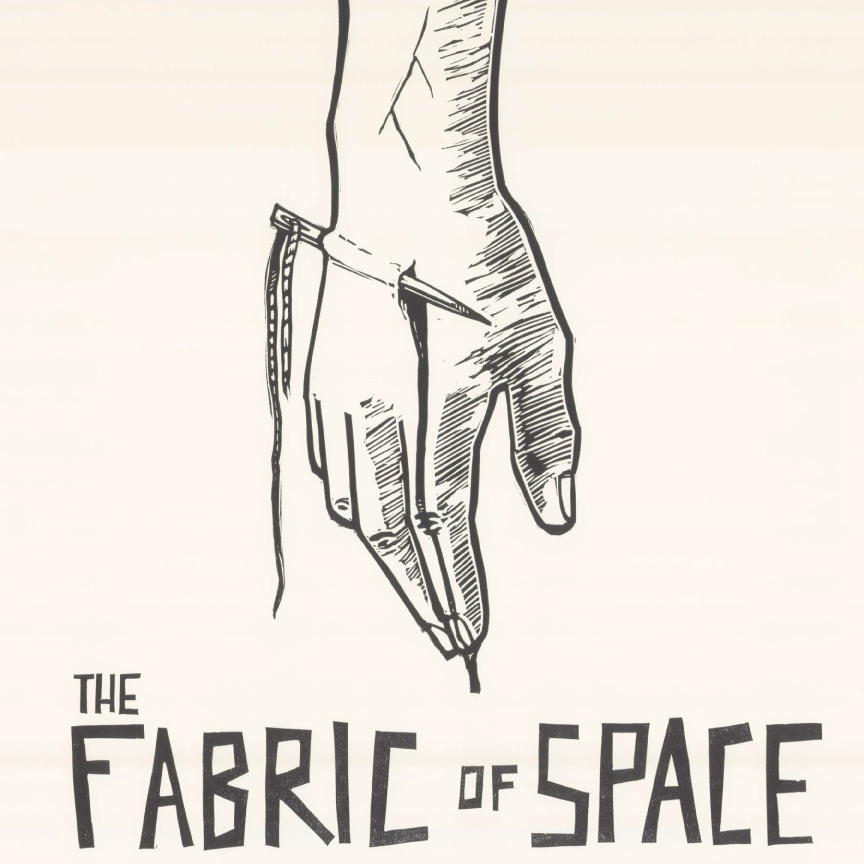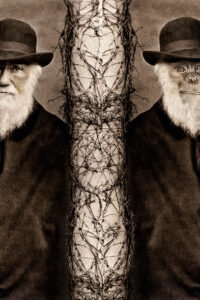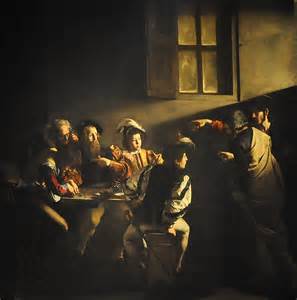
Black has to be the most ancient of colors. The book of Genesis states that it is the black darkness that shrouds the Spirit of God while contemplating the formless void before speaking the light into existence. There is no reflection in the color black. Black swallows all color concealing deeper mysteries. One of my favorite artists is Caravaggio, the Baroque painter whose bold, rich colors were more vibrant and profound because of his lavish use of the color black and its shadowy shades in each canvas. Most often when Caravaggio used light it was to illuminate the human actions of his subjects frozen in dramatic performance and often with postures and expressions of anguish or wonder or radiance.
In the opening scene of the film “The Fabric of Space,” a father and son lie on the ground contemplating the wonder of the black sky above them pierced with tiny pinpricks of starlight and what it might be like were they to be flung into all that space. I’ve been asked by several people who have watched this film as to its possible meaning. I feel honored by those inquisitive enough to ask about our process in creating such a story. It seems their imaginations had been “flung into space” by the film. One person even said, “I don’t fully follow the tale, but I am scared every time I watch it.” Life can be unpredictable, I reminded them, and sometimes dangerously so. Events and people can change suddenly and drastically. There is only so much we can do in our efforts to safeguard against unpredictable and unwanted disruption in our lives.
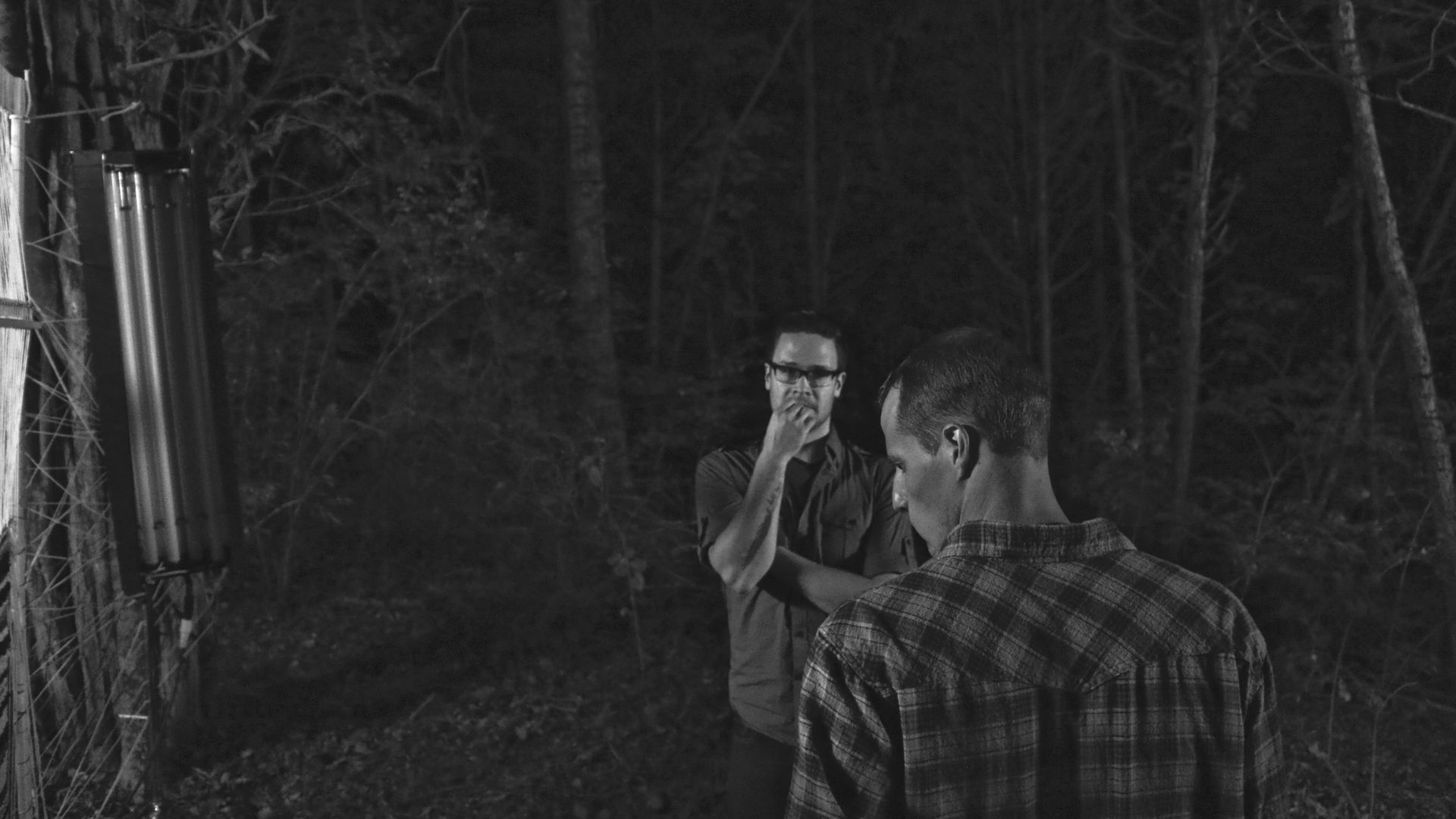
When Derek Pearson and I were discussing this abstract notion of the coexistence of spirit and body and what might happen when they separate, we went further with the storyline and began giving it muscle and bone: how the father would witness the unexpected departure of his son’s spirit from his body; how the father would chase after his son’s spirit into a dark forest where he comes upon an extraordinary character weaving a giant fabric; and how the father would desperately bargain for his son’s life in exchange for his own. When Derek said he planned to shoot his film in black and white, I thought of Rod Serling and “The Twilight Zone.” This concept was in homage to the genre created by that great television show.
Meaning, like beauty, is in the eye of the beholder, and assigning specific meaning to works of art risks impertinence. I see something different each time I watch the film. There is a poetic phrase we use when we are certain of something: “Without a shadow of a doubt.” I have learned to be comfortable with my doubts, which may mean I am comfortable remaining in the shadows when offering any definitive meaning to this film. Remember, in this dreamlike world Derek has created, anything can happen that would offer multiple meanings, and he uses the palette of black and white and its accompanying shadows to weave this mysterious tale with great effect.
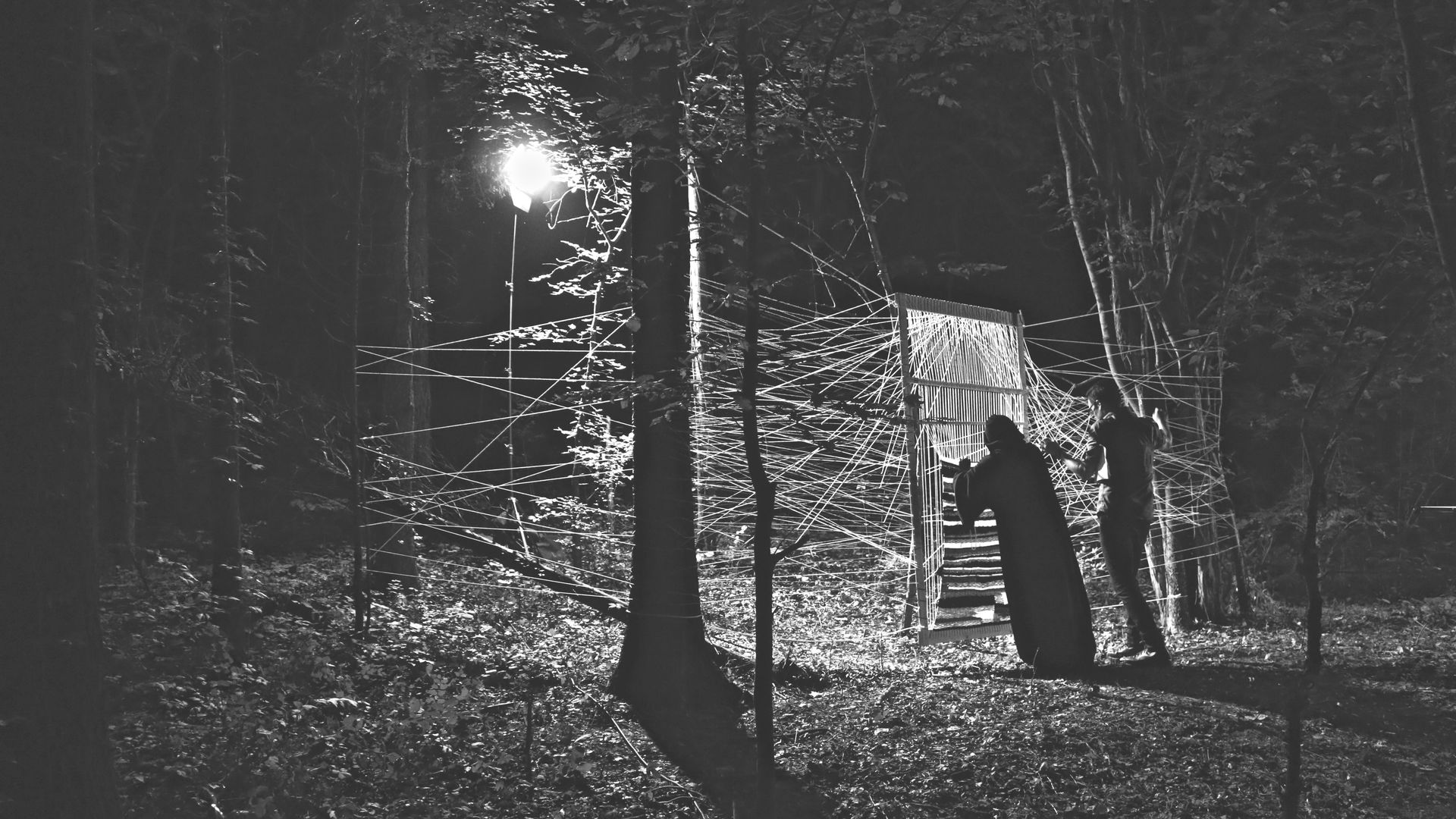
There is mythology to the story with its illusion to Helios and the presence of the mysterious Weaver who wields some degree of power over the fate of a human being, and yet the tale has a baseline of reality. We can all understand the father’s devotion to his child, his willingness to go on a rescue mission and confront a more powerful being pleading for the life of his child. The Weaver offers a form of hope that might save the son, but it requires that both father and son must experience mutual pain. That is where the story is grounded, and the light that shines on the father’s face at the end when he knows how he can save his child, begins to dispel the darkness. A father’s love for his child is what most resonates.
So if you have 7 minutes and 51 seconds to kill and are curious enough to spend that time watching this film, then switch over to the Home Page on this website and click “The Fabric of Space” poster on the “Recent Projects” slider. The film will pop up, and you can decide what the physics of this story does to your heart and mind…and my thanks for taking the time to watch.

